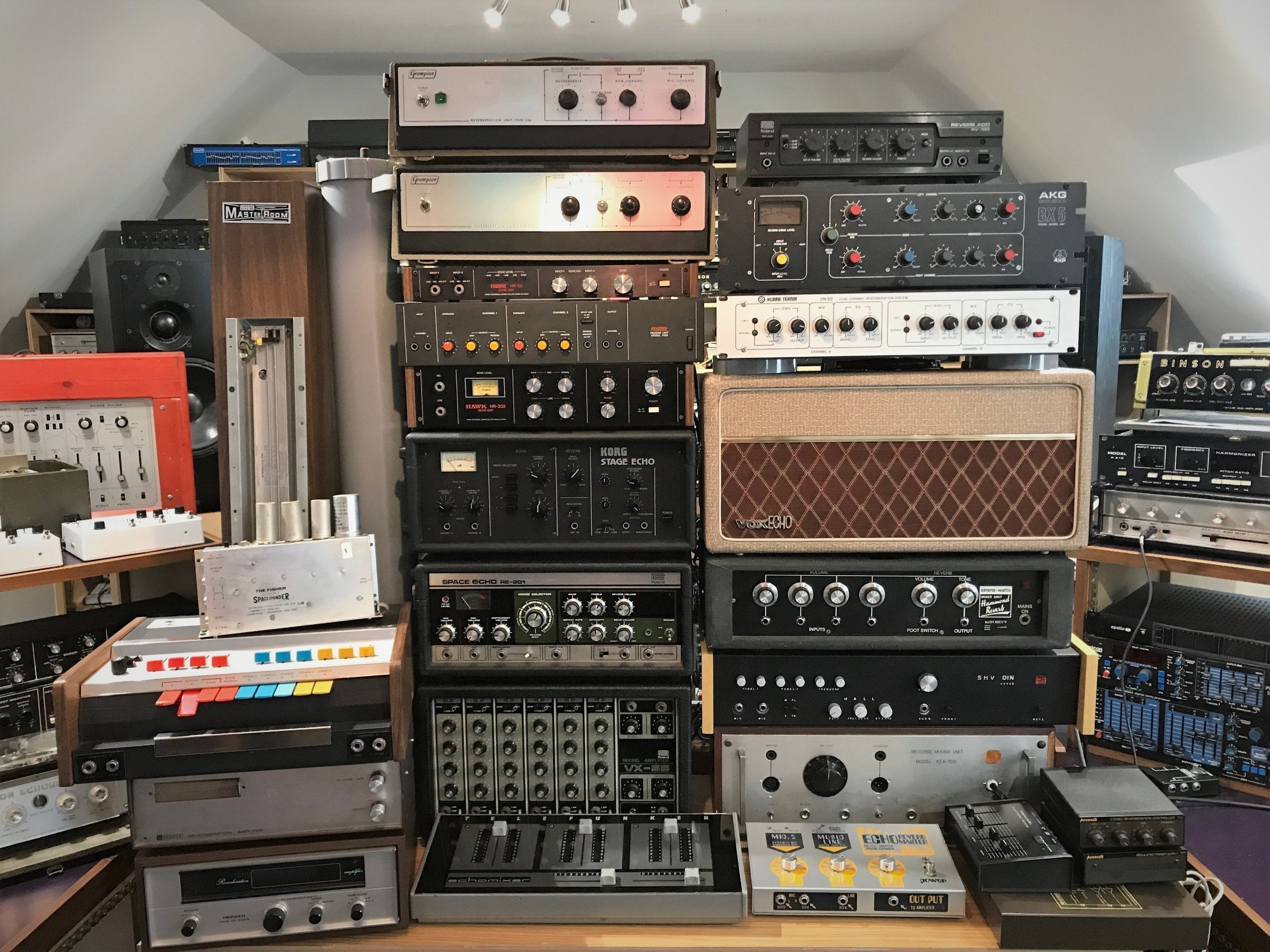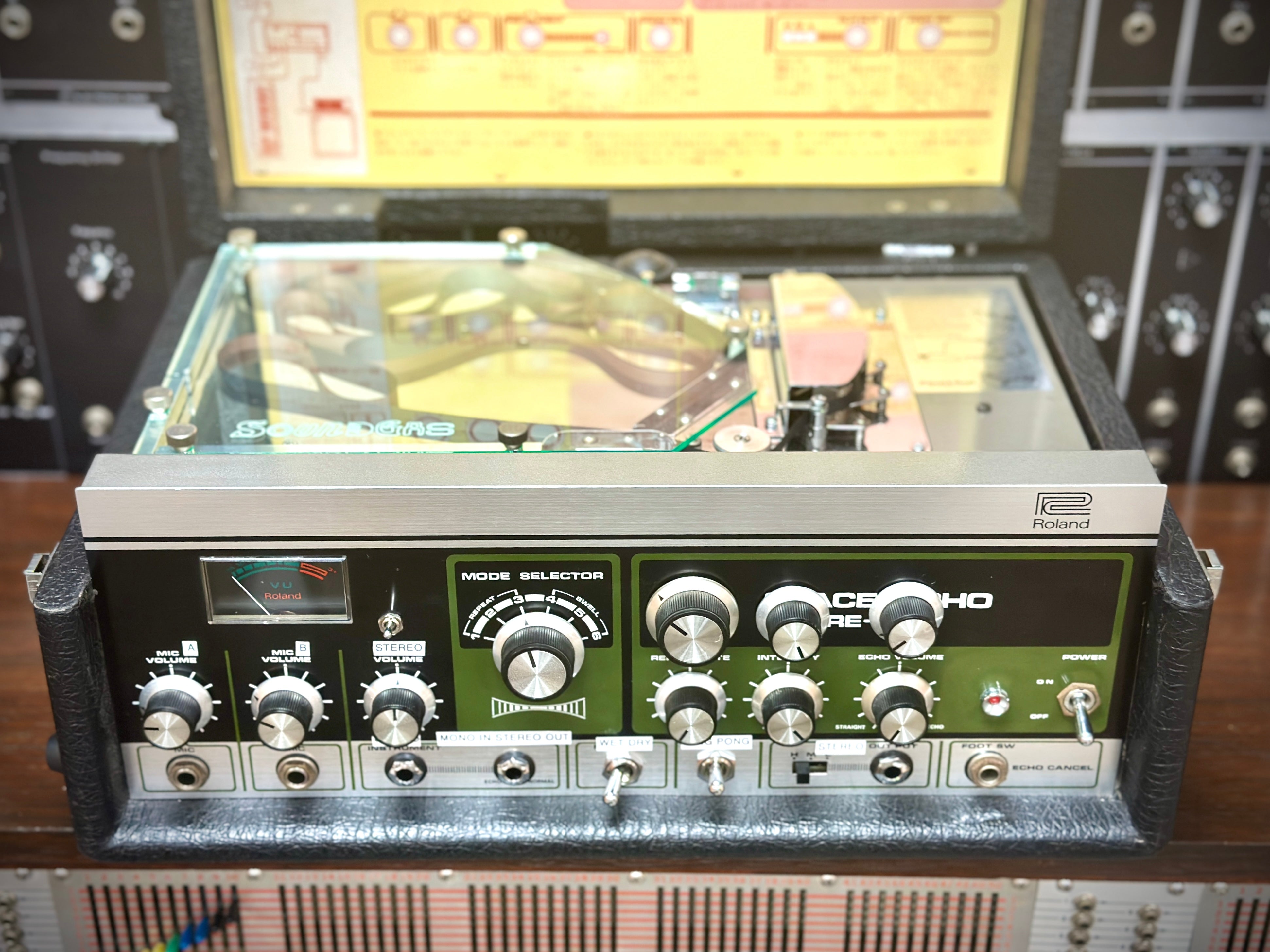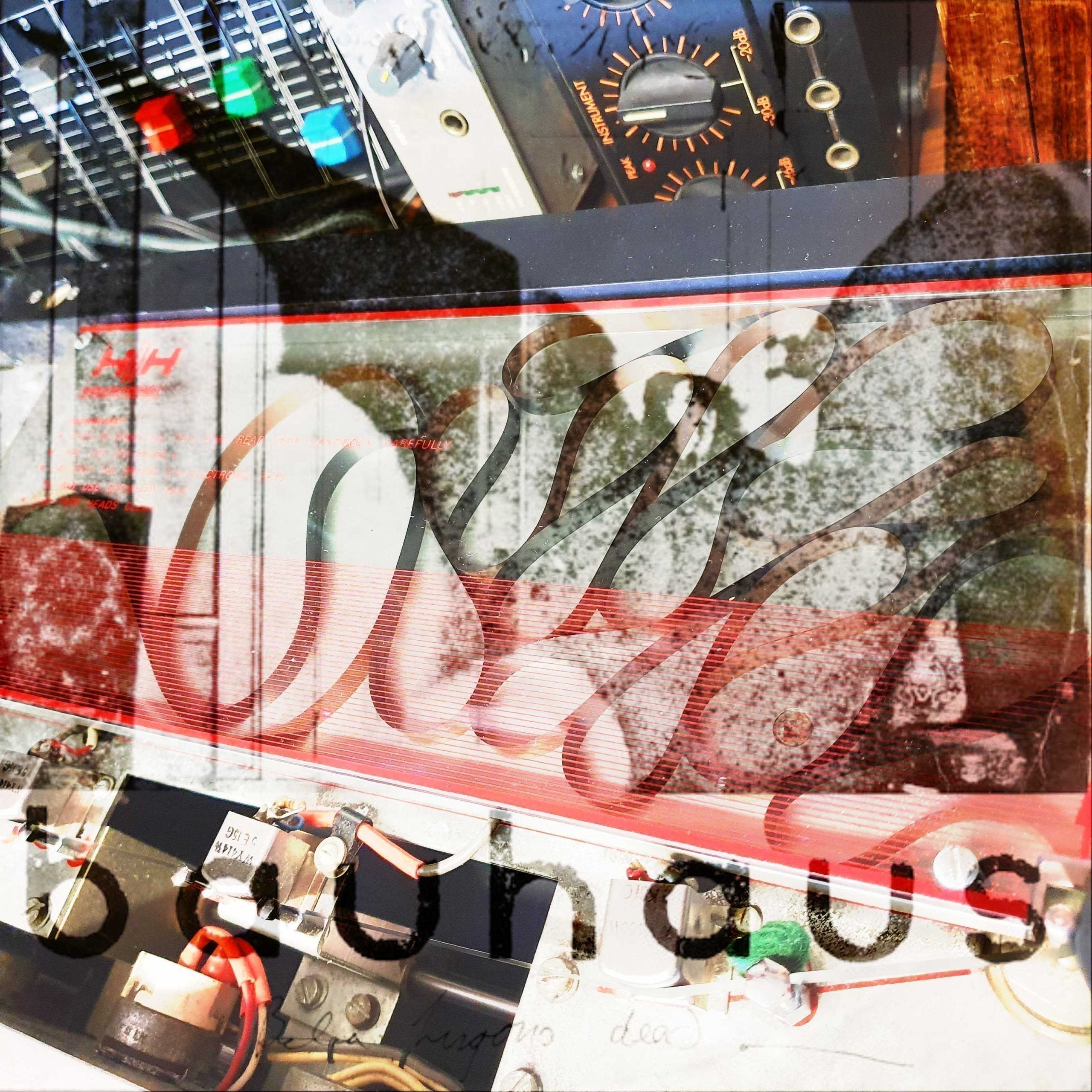
Which Minimoog? Vintage, Moog Reissue or Behringer Model D?
In which Tony gives his answer to two questions we are often asked about vintage Minimoogs:
“Should I buy a vintage Minimoog or the reissue Moog Model D?”
“Why buy an original Minimoog when you can have a Behringer Model D for a fraction of the price?”
But first, let’s just lay down something of a benchmark with this incredible, near mint 1972 muSonics Minimoog we sold last year – one of two we’ve had through from the short-lived, pre-Moog Music era, loaded with R.A. Moog boards:
SHOULD I BUY A VINTAGE MINIMOOG OR THE REISSUE MOOG MODEL D?
It’s no secret that I love early Minimoogs, and at Soundgas we tend to only sell examples from the first half of the seventies, so how does the reissue stack up? The now-discontinued Moog Minimoog Model D was undoubtedly a labour of love for Moog. When I played one, I found I could get close to my favourite sounds and reach the right destination, but that I didn’t enjoy the journey as much.
In this article, when I say ‘original’ I am referring to a well-restored pre-1976 example with original oscillator board, because that’s what I know and love: I’m sure some later Minis also exude similar charms, but given the reissue is based upon the final iteration of the 70s Model D, my feeling is the differences will be less-noticeable. With an original every step of the way to finding the sound you seek is a joy. From the feel of the knobs, switches and keys to the pleasure of playing a vintage instrument that’s been loved for over four decades, the originals exude a deep sense of history and charm and inspire at every turn. When I find myself with an early Minimoog in front of me, I unexpectedly make sounds and create music that wouldn’t have happened with another synth, nor I suspect with a reissue. So much of playing a Minimoog is about the subtle performance tweaks and changes: if they sound gorgeous every step of the way rather than needing to be teased into the right sonic territory, your recordings are going to shine brighter.
So if you’re choosing between a reissue Model D and a later vintage unit, there may well be less in it sonically. It may come down to aesthetics – do you prefer the look/feel/security of a ‘new’ synth over a more ‘characterful’ original? Or it may be the extended features that swing it for you – do you want Midi, aftertouch, more CV control, and the undoubted appeal of the extra LFO on the reissue? Then there’s the issue of stability: a well-restored original is fine-sounding instrument and can be very stable, but for gigging I’d choose a later example, and this is where the reissue should score highly.
Full disclosure: I am, without a doubt, privileged that much of my experience with Minimoogs is with earlier incarnations, so yes, I am absolutely biased towards them because of the sounds they create and the deep joy I feel playing them. This does the reissue no disservice: it remains one of few modern synths that I’ve played and enjoyed. It looks and feels like a Minimoog and has been built with love by a company and people who care: there is much to recommend it and I doubt you’d ever regret buying one. Now they’re no longer being produced, I see them holding their value well into the future and maybe slowly increasing as stock becomes scarcer. There will however be a trickle-down effect as studio musicians who own them trade up for early examples. Why do I suggest people may continue to trade reissue Model Ds for early original examples? It’s borne out by my own experience, and also that of our customers: you don’t have to take my word for it, here’s what two customers said after buying an early Minimoog from Soundgas to replace a Moog Minimoog Model D.
“The Moog D reissue is a good high quality synth and Moog did a very decent job resurrecting their classic. I expected to hear a difference, as I have experienced this again and again with vintage gear but I did not expect the difference to be night and day. Which in this case it is… …you just stumble across classic patches with ease, and fed through a good preamp they immediately sound 100% like straight from the record. The sweetspot on this machine is f…… huge.”
“Everything about this Moog is beautiful. The wood, the discoloured switches and of course the sound. Comparing it to my reissue Model D, I was impressed at how close the reissue could get for certain sounds, but the more I played, the more I realised the original has something extra, which are the kind of subtleties I obsess over. It sounds like it’s coming off tape! The reissue sounds cleaner and more stable in comparison, which benefits from some extra treatment, where the original sounds perfect straight out of the box.”
This mint 1973 Moog Minimoog above was an extraordinary find – it had been packed away in a loft in back ’73 after just a few plays and was essentially as-new.
WHY BUY AN ORIGINAL MINIMOOG WHEN YOU CAN HAVE A BEHRINGER MODEL D (BMD) FOR A FRACTION OF THE PRICE?
I need to be very careful with what I say here as feelings can run high answering this question (this gentle poking of the synth community below generated a mere 72 comments!):
Firstly, much as I appreciate that Behringer has done a great deal to democratise music creation by making the tools of the trade accessible to a greater number of people, I do have a problem with a business that closely replicates another company’s products while they are still being produced by that company. There, I’ve said it.
Now to the realities of life for many musicians: most will never afford a reissue Minimoog or an original vintage Model D, and Uli Behringer has done the many a great service with the Behringer Model D. I don’t own one (and you may ask, why would I buy a Behringer when I have access to an original vintage Minimoog?) but I know quite a few who own both an original or reissue Minimoog who have also bought a BMD: because it’s compact, has onboard Midi, it’s compatible with Eurorack, it’s less than £300, etc, etc…
When I (briefly) played a friend’s BMD, I was reasonably impressed by the sound – it seemed very close to the reissue Minimoog in that I could get to the sounds I wanted, I just didn’t enjoy the process as much as I do with an early Mini. But the form factor wasn’t great – my fingers are not dainty, and the BMD felt cramped, and I had to squint and pick my way round the controls carefully, which cramped my style somewhat. However, this is nit-picking: if the BMD had been released a decade or two ago at this price point then I would certainly have bought one and rejoiced in its existence. And then when I could eventually afford to own a real Minimoog, I would have still done so.
The BMD is a gateway Mini: it’s better than a plug in and enough to get you hooked, but if you can afford it, you’ll keep coming back for more until you’ve got a Moog. The BMD is just not as addictive or desirable as the real thing, but it’s a start, and for many it’s all they’ll ever need to satisfy their Minimoog cravings. While it sounds close to a real Moog, the form factor cramps carefree creativity, and that’s actually a big deal when you’re making music: you don’t want to be squinting at controls or worrying about catching the Filter Emphasis while adjusting the Frequency mid-session. Or it’s the compact unit you can gig with (if you’re very careful and have small hands), or stick in your modular system, or use as part of a compact writing rig, or just have fun with. Or, if you’re a little deranged, chain 8 or 16 together and create a budget Moog One. I’ll get my coat.
I wrote a comment in the comments thread on the Instagram post above, having stirred the hornet’s nest by suggesting I didn’t feel a BMD would be quite as good as an original early Minimoog, as follows:
“In a nutshell, a BMD isn’t going to sound as lovely (or the same) as an early Minimoog (which all sound different anyway). But it is a lot cheaper/easier to find, and does sound very close to later Minis (or sadly for Moog, the reissue). That said, it’s doubtful many who could afford the real thing would prefer to buy the BMD (they might buy one in addition to the real thing).”
For people who cannot afford a real Mini, or want the extra functionality, the BMD is undoubtedly a godsend.
My personal reservations about the lack of sustainability with cheaply-made gear which cannot be repaired when it fails could be levelled at most modern synths etc.
So on balance – if you want a cheap hardware mini (and can square it with your environmental conscience), then Uli and co have done you a big favour…?
======
For a full comparison between a vintage Minimoog, a reissue Model D and the Behringer, head over to Sound On Sound for Gordon Reid’s excellent review.
We should have a vintage Minimoog for sale on the site, but if you don’t see one there get in touch to see what we have coming through servicing.







